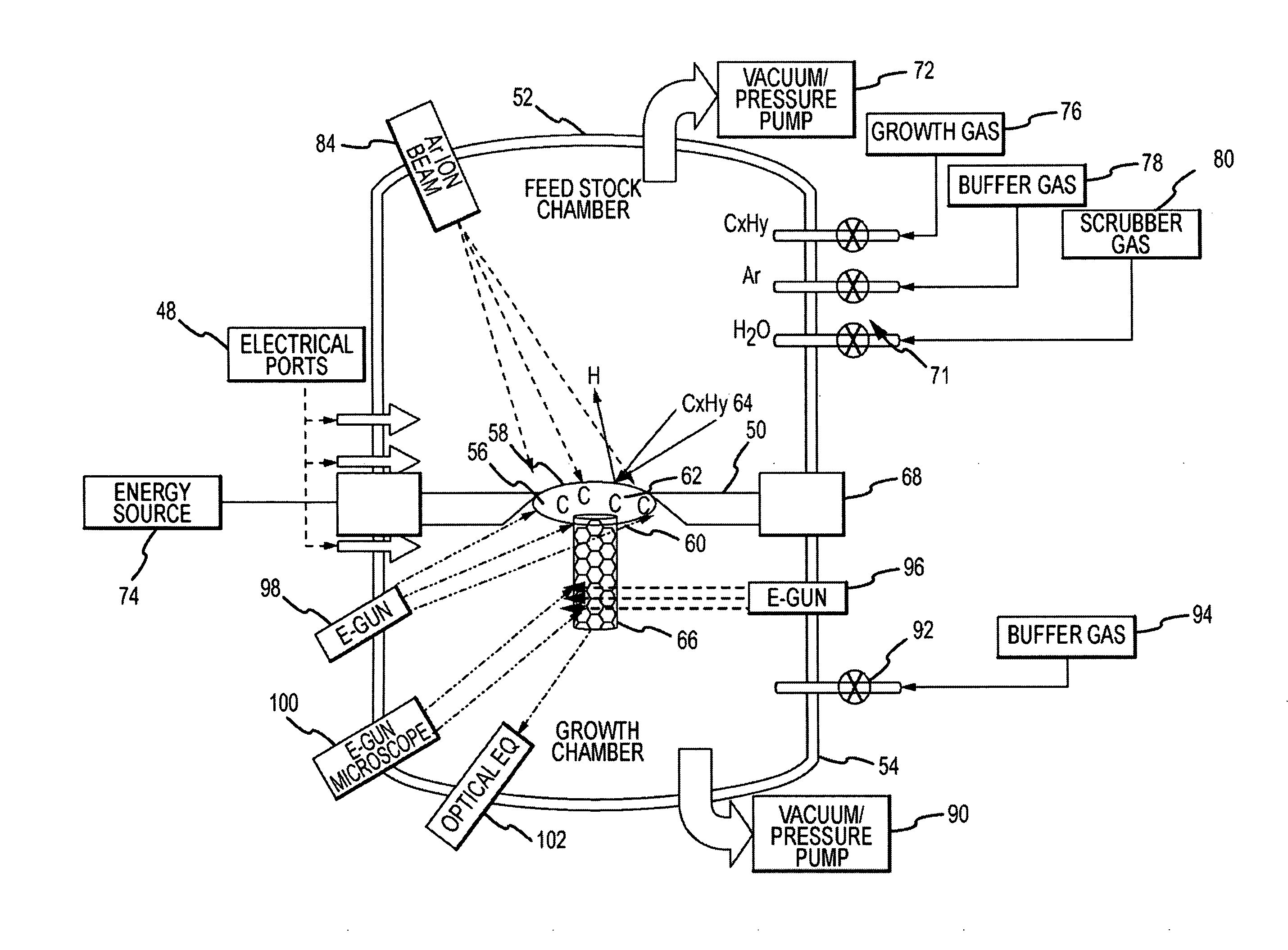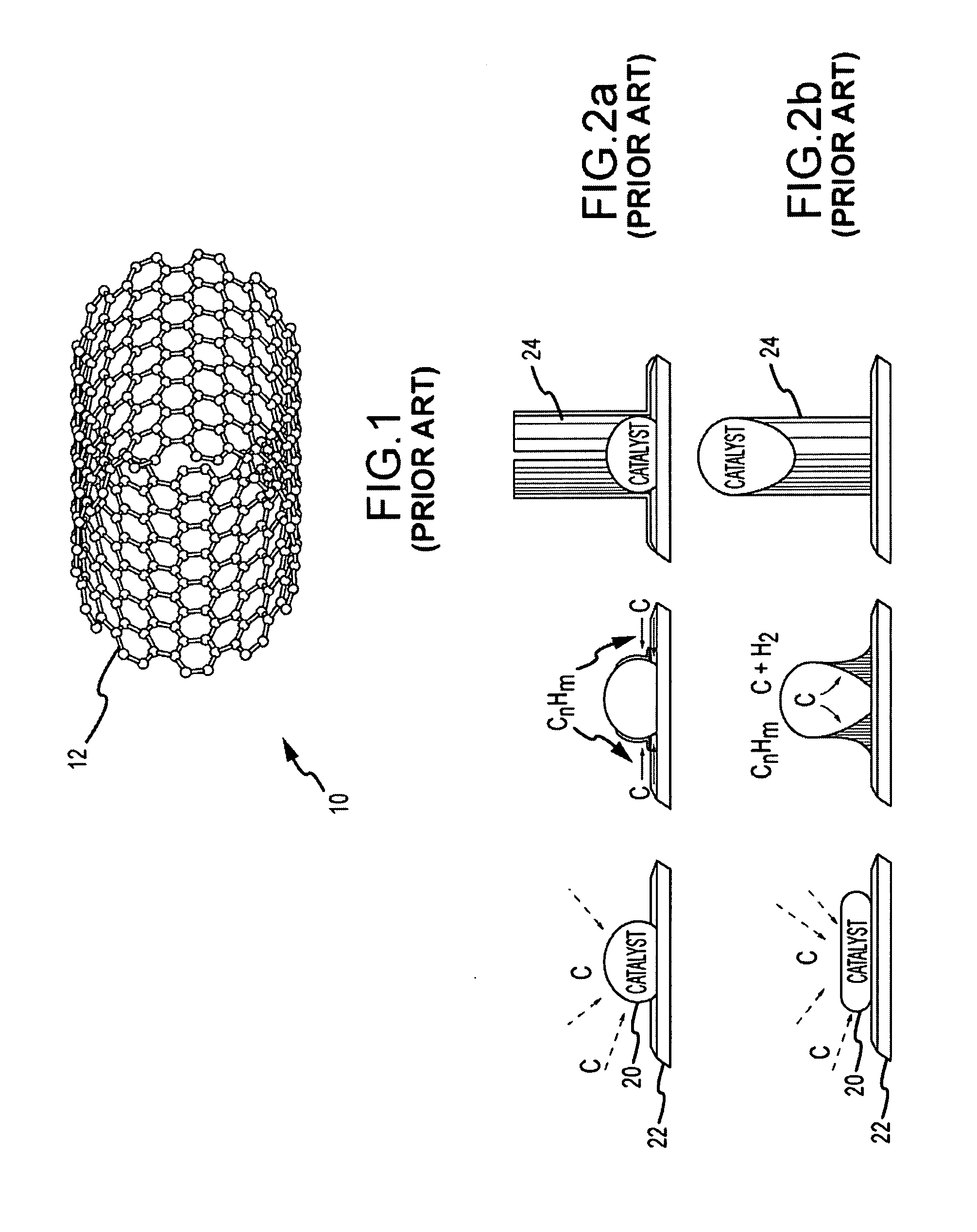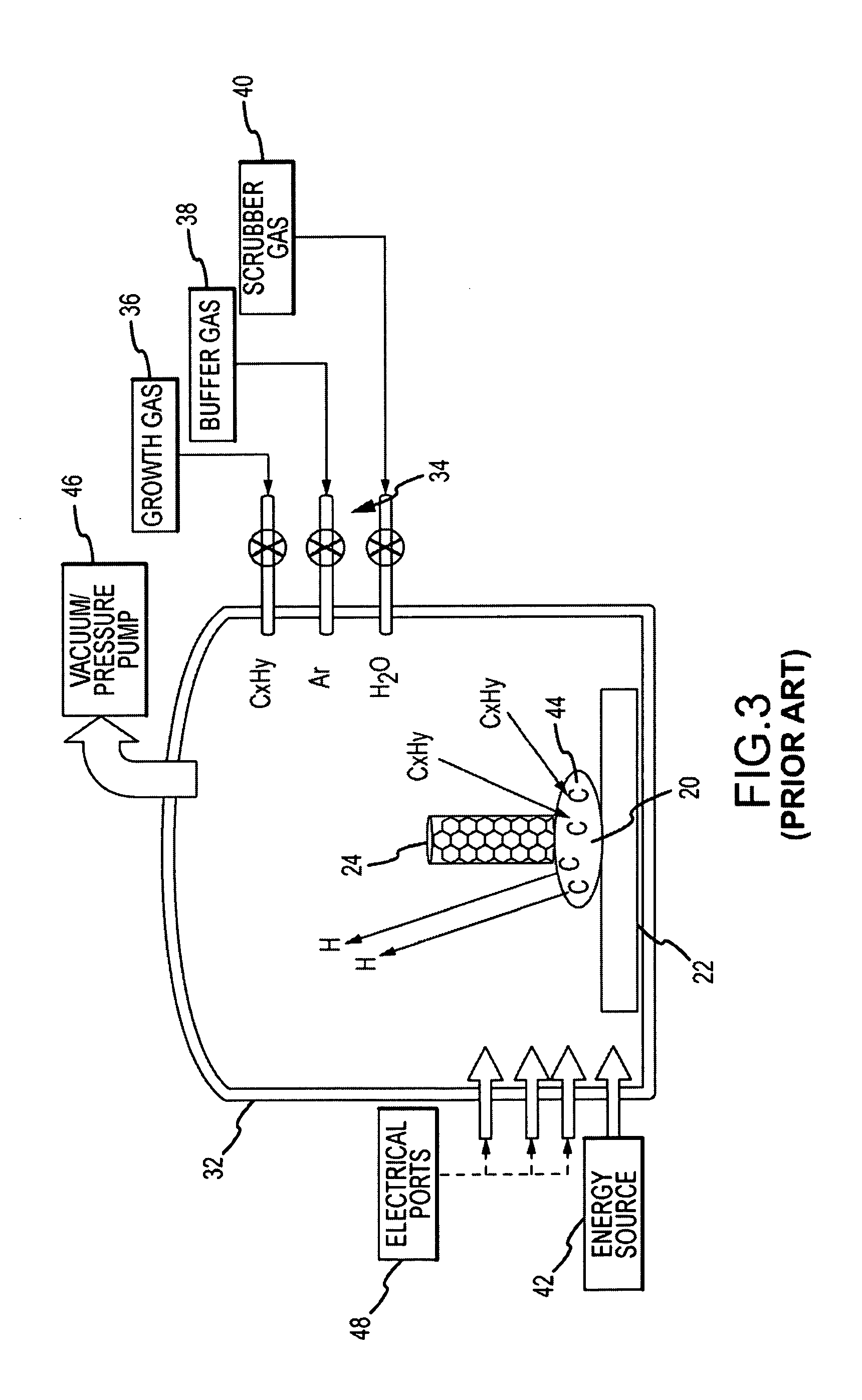Carbon nanotube growth via chemical vapor deposition using a catalytic transmembrane to separate feedstock and growth chambers
- Summary
- Abstract
- Description
- Claims
- Application Information
AI Technical Summary
Benefits of technology
Problems solved by technology
Method used
Image
Examples
case 1
[0038]Transmembrane: 400 micron thick silicon with approximately 1 million 10 nm diameter pores filled with Fe.
[0039]Feedstock Chamber: 10-45% Ethylene growth gas, 30-85% Argon buffer gas (purged before growth or introduced continuously), 5-25% Hydrogen scrubber gas (purged before growth or introduced continuously), 1E−1 to 1E+2 Torr, 500-900 C.
[0040]Growth Chamber: Vacuum (−2) or Argon / Helium inert gases at 1E−1 to 1E+2 Torr
case 2
[0041]Transmembrane: 400 micron thick silicon with approximately 1 million 10 nm diameter pores filled with Fe.
[0042]Feedstock Chamber: 15-100% Ethanol growth gas, 75-90% Argon buffer gas (purged before growth or introduced continuously), 5-25% Hydrogen scrubber gas (purged before growth or introduced continuously), 1E−1 to 1E+2 Torr, 500-900 C.
[0043]Growth Chamber: Vacuum (−2) or Argon / Helium inert gases at 1E−1 to 1E+2 Torr
case 3
[0044]Transmembrane: 20-100 micron thick alumina with approximately 1 trillion 13-18 nm diameter pores filled with Fe.
[0045]Feedstock Chamber: 10-45% Ethylene growth gas, 30-85% Argon buffer gas (purged before growth or introduced continuously), 5-25% Hydrogen scrubber gas (purged before growth or introduced continuously), 1E−1 to 1E+2 Torr, 500-900 C.
[0046]Growth Chamber: Vacuum (−2) or Argon / Helium inert gases at 1E−1 to 1E+2 Torr
PUM
| Property | Measurement | Unit |
|---|---|---|
| Pressure | aaaaa | aaaaa |
| Flexibility | aaaaa | aaaaa |
| Defects | aaaaa | aaaaa |
Abstract
Description
Claims
Application Information
 Login to View More
Login to View More - R&D
- Intellectual Property
- Life Sciences
- Materials
- Tech Scout
- Unparalleled Data Quality
- Higher Quality Content
- 60% Fewer Hallucinations
Browse by: Latest US Patents, China's latest patents, Technical Efficacy Thesaurus, Application Domain, Technology Topic, Popular Technical Reports.
© 2025 PatSnap. All rights reserved.Legal|Privacy policy|Modern Slavery Act Transparency Statement|Sitemap|About US| Contact US: help@patsnap.com



